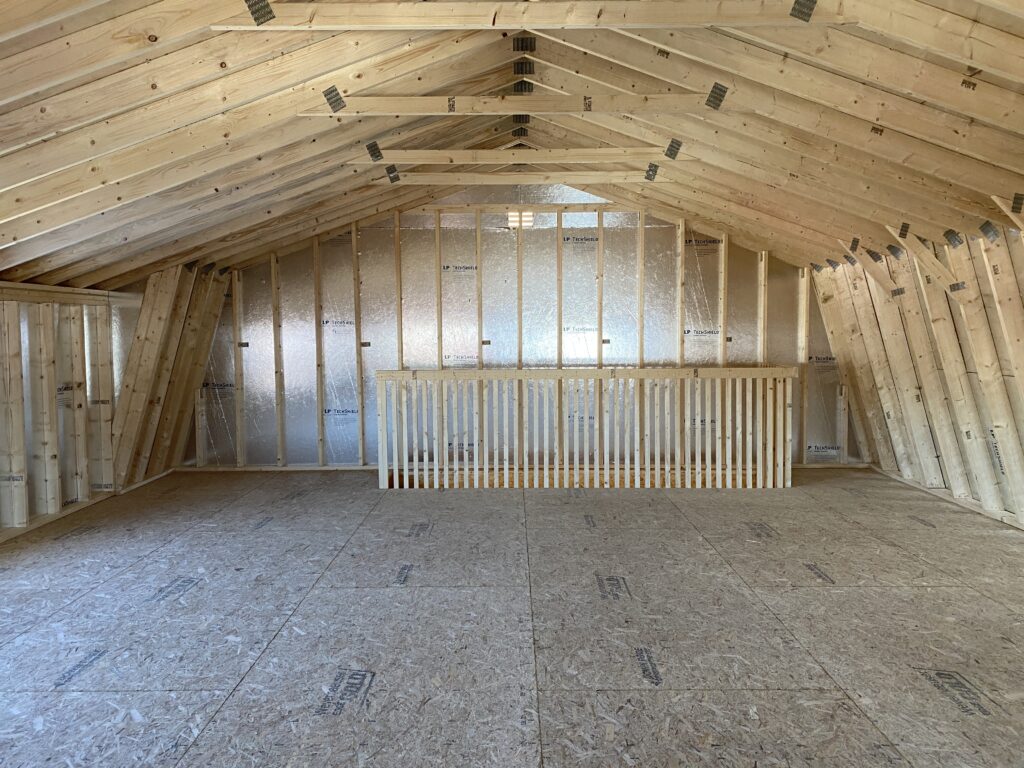Tile floors are durable and beautiful, but grout, the material that fills the spaces between tiles, requires proper sealing to stay protected. Without sealing, grout absorbs moisture, stains, and dirt, making floors harder to clean and more likely to deteriorate over time. Sealing tile floor grout helps maintain a clean appearance and extends the life of both the grout and the tile. At Ohio Cabin and Structures, homeowners often ask how to keep tile floors looking new after installation. The answer is simple: sealing the grout properly and maintaining it over time. With the right products and techniques, sealing grout can be a straightforward DIY project that makes a big difference.

Why Grout Needs to Be Sealed
Grout is porous, which means it absorbs water and dirt easily. Over time, moisture and spills can cause discoloration, mold, or even cracking. Sealing grout adds a thin protective layer that prevents liquids and stains from seeping in. It also makes cleaning easier since dirt stays on the surface instead of getting trapped in the grout lines. Whether you’ve just installed new tile or want to refresh existing floors, sealing the grout is a simple yet essential part of home maintenance. It keeps your flooring looking brighter and extends its lifespan.
When to Seal Grout
Newly installed grout should be sealed after it has cured completely. Most grout types require at least 48 to 72 hours of drying time before applying sealer. Always check the manufacturer’s instructions for the recommended wait period. If the grout is older, make sure it’s thoroughly cleaned and dry before sealing. A quick test to see if sealing is needed is to sprinkle a few drops of water onto the grout. If the water beads up, the sealer is still effective. If it soaks in, it’s time for another coat. In most homes, sealing should be done once a year in high-traffic areas and every two years in low-traffic spaces.
Types of Grout Sealers
There are two main types of grout sealers: penetrating sealers and membrane-forming sealers. Each has specific benefits depending on your flooring and the location of the tile.
Penetrating sealers soak into the grout and form an invisible barrier below the surface. They allow moisture vapor to escape while keeping stains and liquids out. These are best for areas exposed to water, like bathrooms, kitchens, or laundry rooms.
Membrane-forming sealers create a thin, protective coating on the surface of the grout. They’re easier to apply and work well in dry areas such as hallways or bedrooms. However, they can wear off faster in wet environments.

Choosing the Right Sealer for Your Floor
The best sealer depends on your tile type and where it’s installed. For ceramic or porcelain tiles with cement-based grout, a penetrating sealer works best. For natural stone tiles like marble, limestone, or travertine, use a product that seals both the tile and the grout. If your tile is glazed, focus only on sealing the grout lines. Sealing glazed tiles can cause a slippery surface. For textured tiles, a brush-on or spray-on sealer is easier to control.
Step 1: Clean the Grout Thoroughly
Sealing dirty grout traps stains underneath the surface, so start by cleaning it well. Use a mild tile cleaner or a mix of warm water and a few drops of dish soap. Scrub gently with a soft brush or grout scrubber to remove dirt, soap residue, or mildew. For tough stains, a mixture of baking soda and water can help lift grime naturally. Avoid using harsh chemicals like bleach, which can damage grout or fade its color. Let the area dry completely for at least 24 hours before applying sealer.
Step 2: Apply the Grout Sealer
Once the grout is clean and dry, apply the sealer with a small brush or foam applicator. Work in small sections, following the grout lines carefully. Avoid getting sealer on the tile surface, especially if it’s unglazed, as it can leave a hazy film once dry. Allow the first coat to soak in for about 5 to 10 minutes, then wipe away any excess with a clean cloth. Apply a second coat for added protection, especially in high-traffic areas like kitchens or bathrooms.
Step 3: Wipe Away Excess and Let It Cure
After sealing, gently buff the tiles with a dry microfiber towel to remove residue. Leave the floor untouched for at least 30 minutes to let the sealer set. Avoid washing or heavy foot traffic for 24 hours so the product can fully cure. Once cured, the grout will have an invisible barrier that protects against spills, dirt, and moisture. If water still absorbs after sealing, apply an additional coat for full coverage.

Step 4: Check for Missed Spots
Inspect the grout lines carefully under good lighting. Missed areas can appear slightly dull or discolored. Apply another thin coat on those sections to ensure even coverage. It’s better to do two light coats than one heavy one to avoid buildup or streaking. After finishing, allow the surface to cure again for a full day before mopping or applying any cleaning products.
How to Maintain Sealed Grout
Once your grout is sealed, maintenance is simple. Sweep or vacuum regularly to remove dust and debris. Clean the floor with a mild, pH-neutral cleaner and a damp mop. Avoid abrasive tools that can scratch the sealer and reduce its effectiveness. In kitchens, where spills happen often, wipe up liquids immediately to prevent staining. For bathrooms, using an exhaust fan helps reduce humidity and prevents mold growth on grout lines.
How Often to Reseal Grout
The longevity of your sealer depends on the type used and how much wear the floor gets. Penetrating sealers generally last one to three years, while surface sealers may need reapplication every six to twelve months. High-traffic or damp areas require more frequent resealing. A quick water test every few months helps you know when it’s time. If water darkens or seeps into the grout instead of beading up, it’s time to reseal.

Eco-Friendly Sealing Options
For those seeking environmentally friendly products, water-based sealers are a great alternative. They have lower VOC levels and are safer to use indoors. They also dry faster and emit less odor than solvent-based products. Many modern water-based sealers perform just as well as traditional ones. Choosing sustainable cleaning and sealing methods helps maintain a healthier indoor environment. For more guidance on eco-friendly home maintenance, you can visit the EPA’s guide on indoor air quality.
Should You Hire a Professional?
Sealing grout is simple enough for most homeowners to do themselves, but for large floors or intricate tile designs, professional help may save time. Professionals use commercial-grade products and equipment that provide longer-lasting protection. They can also identify damaged grout that needs repair before sealing. If you’re unsure about which sealer to use or how to handle older flooring, you can reach out to the experienced team through the Ohio Cabin and Structures contact page for expert advice and reliable solutions.
Signs It’s Time to Reseal
Watch for visible signs that the grout needs attention. If the grout appears darker after mopping, absorbs water quickly, or shows signs of mold, it’s no longer sealed. Stains that are difficult to clean or areas where dirt seems to sink in are other indicators it’s time to reseal. In some cases, the existing sealer may simply have worn down unevenly. A light cleaning and reapplication can restore full protection without removing all the old sealer first.
Sealing Colored or Epoxy Grout
If you have colored grout, make sure the sealer is compatible. Some sealers can slightly alter the shade of lighter grouts. Always test a small, hidden area first. For epoxy grout, sealing usually isn’t necessary since epoxy is naturally nonporous and stain-resistant. Still, adding a sealer can make cleaning easier and maintain a consistent appearance, especially in older installations where the epoxy surface has dulled over time.

Benefits of Sealed Grout
Properly sealed grout not only looks better but also saves time and effort in cleaning. Sealed grout resists spills, stains, and discoloration. It prevents bacteria and mold from growing in damp environments, improving indoor air quality and hygiene. A well-sealed floor can handle heavy traffic while maintaining its original color and texture for years. Regular maintenance and timely resealing protect your investment and keep your floors looking as fresh as the day they were installed.
Final Thoughts
Learning how to seal tile floor grout is one of the easiest ways to protect your home’s beauty and value. With the right preparation, materials, and attention to detail, anyone can complete this task successfully. The process doesn’t take long, but the results make a lasting difference in cleanliness, appearance, and durability.
Whether you’re caring for new tile floors or refreshing an older installation, sealing grout ensures your floors stay beautiful for years. For more home maintenance guidance and structure tips, visit Ohio Cabin and Structures today and explore reliable advice for keeping every part of your property in top shape.
